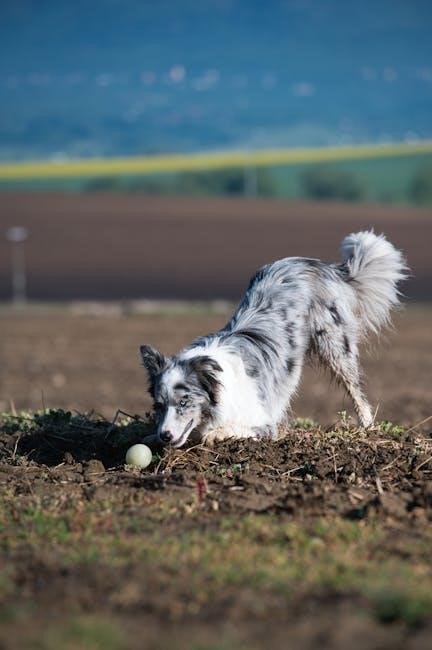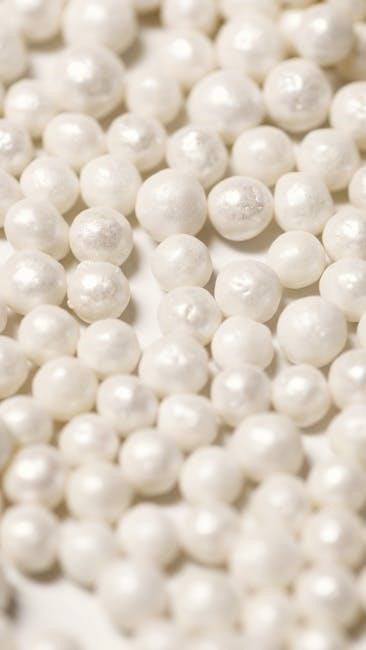Ball Python morphs are unique color and pattern variations resulting from genetic diversity. With over 7,500 recognized morphs, these snakes showcase stunning visual traits, making them highly sought after by breeders and enthusiasts. Their genetic complexity and aesthetic appeal have captivated the reptile community worldwide.
Genetics and Heredity
Ball Python genetics determine the expression of color and pattern traits. Each snake inherits two alleles—one from each parent—shaping its morphology. Recessive, dominant, and co-dominant genes interact to create diverse morphs, making genetic understanding essential for predicting offspring traits and breeding unique variations.
Recessive Genes
Recessive genes in ball pythons require two copies of the same allele (one from each parent) to express their traits. These genes do not dominate over others, meaning their effects are only visible when an individual carries both recessive alleles.
Examples of recessive morphs include albino and axanthic, where specific pigments are reduced or absent. These morphs are highly sought after for their unique appearances, such as the albino’s lack of melanin or the axanthic’s absence of yellow pigment.
Breeders must carefully select parents to produce recessive offspring, as the genes can remain hidden in heterozygous (carrier) snakes. Understanding recessive inheritance is crucial for predicting and achieving desired traits in breeding programs.
Recessive genes play a significant role in creating some of the most stunning and rare ball python morphs, making them a cornerstone of genetic diversity in the species.
Dominant and Co-Dominant Genes
Dominant and Co-Dominant Genes
Dominant and co-dominant genes significantly influence ball python morphs, shaping their appearance without requiring two copies of the same allele. Dominant genes manifest when only one copy is present, often resulting in bold patterns or vibrant colors.
Co-dominant genes, on the other hand, exhibit a blending or combination of traits from both alleles. This interaction creates unique visual effects, such as the fire morph, which combines reduced brown pigmentation with striking pattern alterations.
Dominant traits are highly desirable in breeding programs, as they can produce consistent results with minimal genetic complexity. Co-dominant genes, while more intricate, offer breeders the opportunity to craft one-of-a-kind morphs that stand out in the market.

Understanding the interplay of dominant and co-dominant genes is essential for predicting offspring traits and advancing the diversity of ball python morphs. These genetic principles have revolutionized the art of ball python breeding, enabling the creation of extraordinary visual variations.
By leveraging dominant and co-dominant genetics, breeders continue to push the boundaries of what is possible, ensuring the ball python remains a favorite among herpetoculture enthusiasts.

Types of Ball Python Morphs
Ball Python morphs are categorized into recessive, dominant, and co-dominant types. These genetic variations result in unique color and pattern combinations, offering a wide range of visual diversity for enthusiasts and breeders to explore and appreciate.
Recessive Morphs
Recessive morphs are genetic traits that require two copies of a specific gene—one from each parent—to manifest visually. These morphs do not appear unless both parents contribute the recessive allele, making them rare and often highly sought after. Examples include the albino and axanthic morphs, where the absence of certain pigments creates striking color patterns. Breeding recessive morphs demands precise genetic knowledge, as snakes can be heterozygous (carrying one recessive gene) without displaying the trait. This genetic complexity makes recessive morphs both challenging and rewarding for breeders. Their unique appearances have contributed significantly to the diversity of ball python morphs available today.
Dominant Morphs
Dominant morphs are genetic traits that require only one copy of a specific gene to express their unique characteristics. Unlike recessive morphs, dominant traits are visible even when the snake carries just one dominant allele, making them more straightforward to breed and identify. These morphs often result in bold, striking patterns and colors, such as the Fire morph, which reduces brown pigmentation and creates a vibrant, fiery appearance. Dominant morphs are highly prized for their dramatic visual impact and genetic simplicity. Breeding dominant morphs is relatively easier, as only one parent needs to carry the dominant gene. This accessibility has made dominant morphs incredibly popular among breeders and enthusiasts alike. Examples like the Piebald morph, which features irregular white patterning, showcase the diversity and beauty achievable through dominant genetics. The simplicity and expressiveness of dominant morphs have played a significant role in advancing the art of ball python breeding and driving the demand for unique and visually stunning snakes in the reptile community.

Popular Ball Python Morphs

Albino, Fire, and Piebald are among the most sought-after ball python morphs. Albino snakes lack melanin, resulting in a stark white and yellow appearance. Fire morphs display vibrant, reduced brown pigmentation, creating a striking visual effect. Piebald morphs feature irregular white patterning, adding unique charm. These morphs captivate enthusiasts worldwide with their stunning beauty and genetic uniqueness.

Albino Morph

The Albino Ball Python, also known as Amelanism, is one of the most recognizable and popular morphs. First established in 1992, this morph is characterized by the absence of melanin, resulting in a snake with a stark white and yellow coloration. The lack of melanin eliminates all black and brown pigments, creating a striking contrast that makes the Albino morph highly sought after by collectors and breeders. These snakes are not true albinos, as they retain their yellow pigmentation, but they are often referred to as such due to their lack of melanistic traits. The Albino morph is a recessive trait, meaning that both parents must carry the gene for their offspring to display the characteristic white and yellow pattern. This morph has played a significant role in the development of other combinations, such as the Caramel Albino and the Mystic Albino, further enhancing its importance in the Ball Python morph community; The Albino Ball Python’s unique appearance and historical significance make it a cornerstone of Ball Python genetics and a favorite among enthusiasts.
Fire Morph
The Fire Ball Python is a striking and highly sought-after morph, first bred in 1995. It is characterized by a significant reduction in brown pigmentation and pattern, resulting in a lighter overall appearance. This morph often features a tan or golden base color with vibrant, fiery highlights, creating a visually captivating effect. Some Fire Ball Pythons also display flecks of black on their tan sections, adding an extra layer of visual interest. The Fire morph is co-dominant, meaning it can express its traits in combination with other genes, making it a valuable asset for breeders aiming to create unique and complex patterns. This morph is particularly popular for its ability to enhance other traits, such as in the creation of Blue Eyed Leucistic Ball Pythons. The Fire Ball Python’s unique appearance and genetic versatility have made it a favorite among enthusiasts and breeders alike. Its lighter coloration and striking pattern reduction set it apart from standard Ball Pythons, contributing to its enduring popularity in the reptile community.

Breeding Ball Python Morphs
Breeding Ball Python morphs is an intricate process that requires a deep understanding of genetics and heredity. Breeders typically work with specific morphs to produce offspring with desired traits, combining recessive, dominant, and co-dominant genes. For instance, pairing a spider morph with an axanthic morph can yield a unique combination. Proper incubation and care are essential, as genetic expressions can vary based on environmental factors. Experienced breeders use genetic calculators to predict outcomes, ensuring the desired traits are passed on. Hygiene, nutrition, and controlled humidity are critical to successful breeding. This process has led to the development of over 7,500 morphs, each with distinct characteristics. Breeding Ball Pythons is both an art and a science, blending creativity with genetic knowledge to produce stunning results.

Morph Market and Trends
The Ball Python morph market is a dynamic and ever-evolving industry, driven by the demand for rare and visually striking variations. With over 7,500 recognized morphs, the market offers a wide range of options for collectors and breeders. Popular morphs like the Fire, Albino, and Mojave continue to dominate, while new, exotic combinations gain traction each year. The trend toward multi-gene morphs has intensified, creating snakes with unprecedented color and pattern complexity. This diversity has led to a surge in morph popularity, with prices varying significantly based on rarity and genetic uniqueness. Breeders play a key role in shaping trends by experimenting with new genetic combinations, often influenced by customer demand. As a result, the market remains highly competitive, with new morphs being introduced regularly. The rise of social media has also fueled the popularity of certain morphs, as enthusiasts showcase their collections globally. This constant evolution ensures the Ball Python morph market remains a vibrant and exciting space for reptile enthusiasts.
